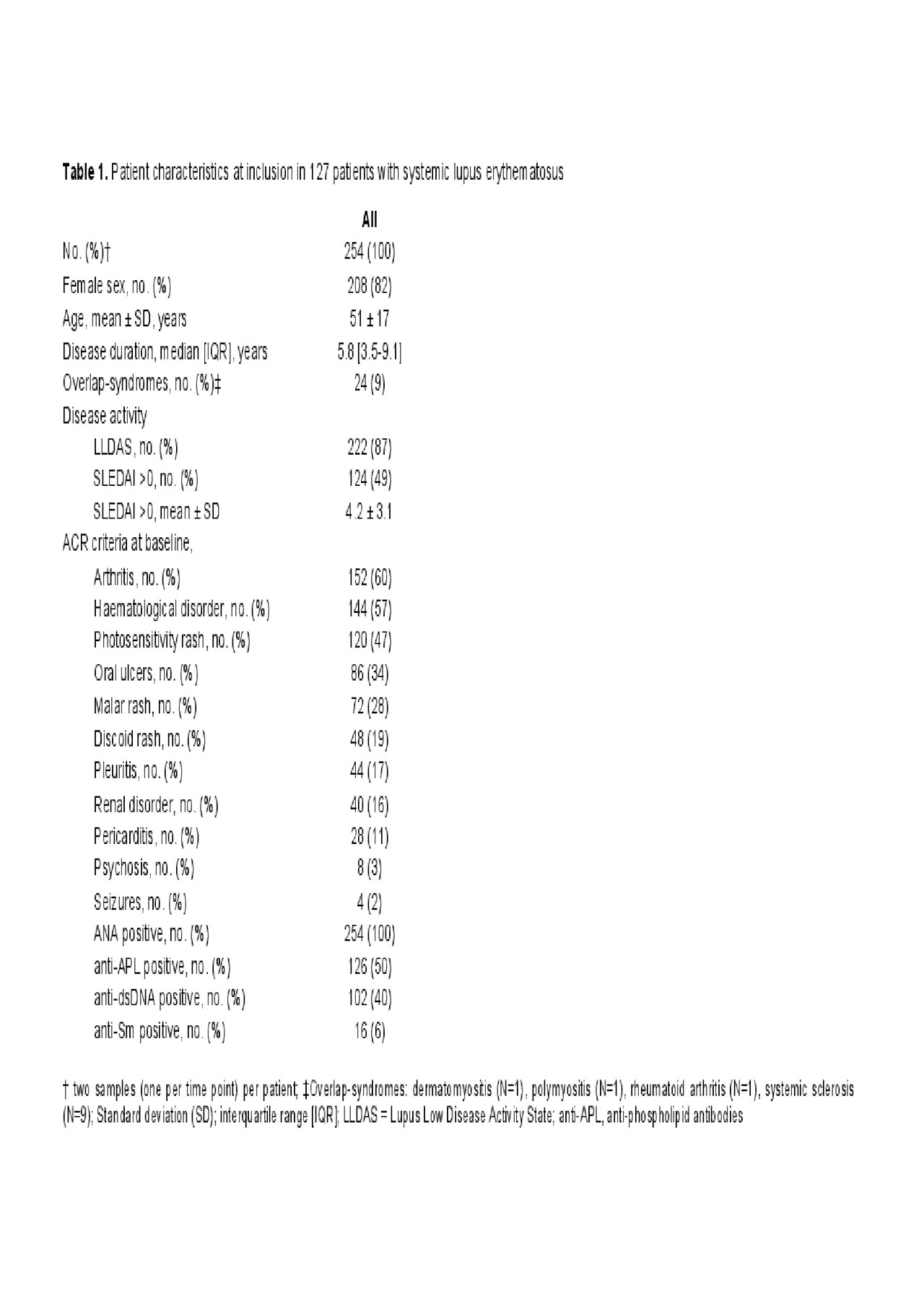Session Information
Session Type: Poster Session (Sunday)
Session Time: 9:00AM-11:00AM
Background/Purpose: There is a lack of reliable biomarkers for disease activity in SLE. While C3a, an anaphylatoxin generated during of complement activation, could be predictive for disease flares, a possible role of the soluble terminal complement complex, sC5b-9, in active SLE has yet to be elucidated. It’s proinflammatory effects on a number of cells types, e.g. glomerular mesangial cells and synovial fibroblasts, have been described.
Objectives:
To study whether the sC5b-9 is associated with clinical disease activity in SLE and to compare it with C3 and C4, well characterized in active disease, and the split product C3a, in addition to laboratory parameters of standard of care.
Methods: Study population and design:
Patients included into the Swiss SLE Cohort Study (SSCS, from St. Gallen centre fulfilling the ACR criteria at inclusion), were entered consecutively into a prospective observational study (Oct. 2015 – Dec. 2017). The following were determined at two clinical visits, at least 6 months apart, and compared with 18 healthy controls:
- clinical disease activity by clinical examination, SELENA-SLEDAI, and by SLICC-Damage, SF-36, PGA, and FACIT
- C3a and sC5b-9 by ELISA,
- a spectrum of routine laboratory of standard routine care
Statistics:
Correlation analyses were performed calculating nonparametric Spearman rank correlation coefficients. Independent associations of continuous and categorical variables were studied by analysis of covariance (ANCOVA) models, using the general linear model approach.
Results:
The disposition at inclusion of our 127 patients is shown in table 1, with 87% of patients in Lupus Low Disease Activity State and 49% with a SELENA-SLEDAI > 0.
There were significant association/correlations (univariate analyses) between:
- sC5b-9 and haematuria (p< 0.001)
- sC5b-9 and glomerular dysmorphic erythrocytes (r=0.139, p=0.020)
- dsDNA ab and sC5b-9 (r=0.221, p< 0.001) with IgG (r=0.421, p≤ 0.001)
There were further correlations between:
- C3a with sC5b-9 (r=0.299, p≤ 0.001), C3a with C3 (r=0.318, p=0.01), and C3a with C4 (r=0.137, p=0.02)
Sensitivities/specificities (with regard to haematuria or increased glomerular erythrocytes) were 75/63% or 64/62% for sC5b-9, 8/68%, or 27/69% for C3, and 8/84% or 18/84% for C4, respectively.
Of note, Immunoglobulin G (IgG) levels were associated with SELENA-SLEDAI (F=4.94, p=0.027) in a multivariate model after adaptation for age, gender, CRP, ESR, ANA titre, dsDNA antibody value, complement factor C3 and C4.
A significant association of C3a with routine laboratory parameters of standard of care, and of sC5b-9 with overall disease activity or other components of the SLEDAI, could not be detected.
Conclusion:
Soluble C5b-9, elevated in our cohort concomitant to urinary signs of renal manifestation, may contribute to the pathogenesis in SLE and be a useful marker of active renal disease.

Tabelle 1 ACR-Abstract-29.05.2019
To cite this abstract in AMA style:
Schmiedeberg K, Mueller R, Neumann T, Pirker I, Rein P, Ribi C, Rubbert-Roth A, Kirschfink M, Voll R, von Kempis J. Association Between the Soluble Terminal Complement Complex C5b-9 (sC5b-9) and Signs of Active Kidney Disease in a Swiss SLE Cohort [abstract]. Arthritis Rheumatol. 2019; 71 (suppl 10). https://acrabstracts.org/abstract/association-between-the-soluble-terminal-complement-complex-c5b-9-sc5b-9-and-signs-of-active-kidney-disease-in-a-swiss-sle-cohort/. Accessed .« Back to 2019 ACR/ARP Annual Meeting
ACR Meeting Abstracts - https://acrabstracts.org/abstract/association-between-the-soluble-terminal-complement-complex-c5b-9-sc5b-9-and-signs-of-active-kidney-disease-in-a-swiss-sle-cohort/
